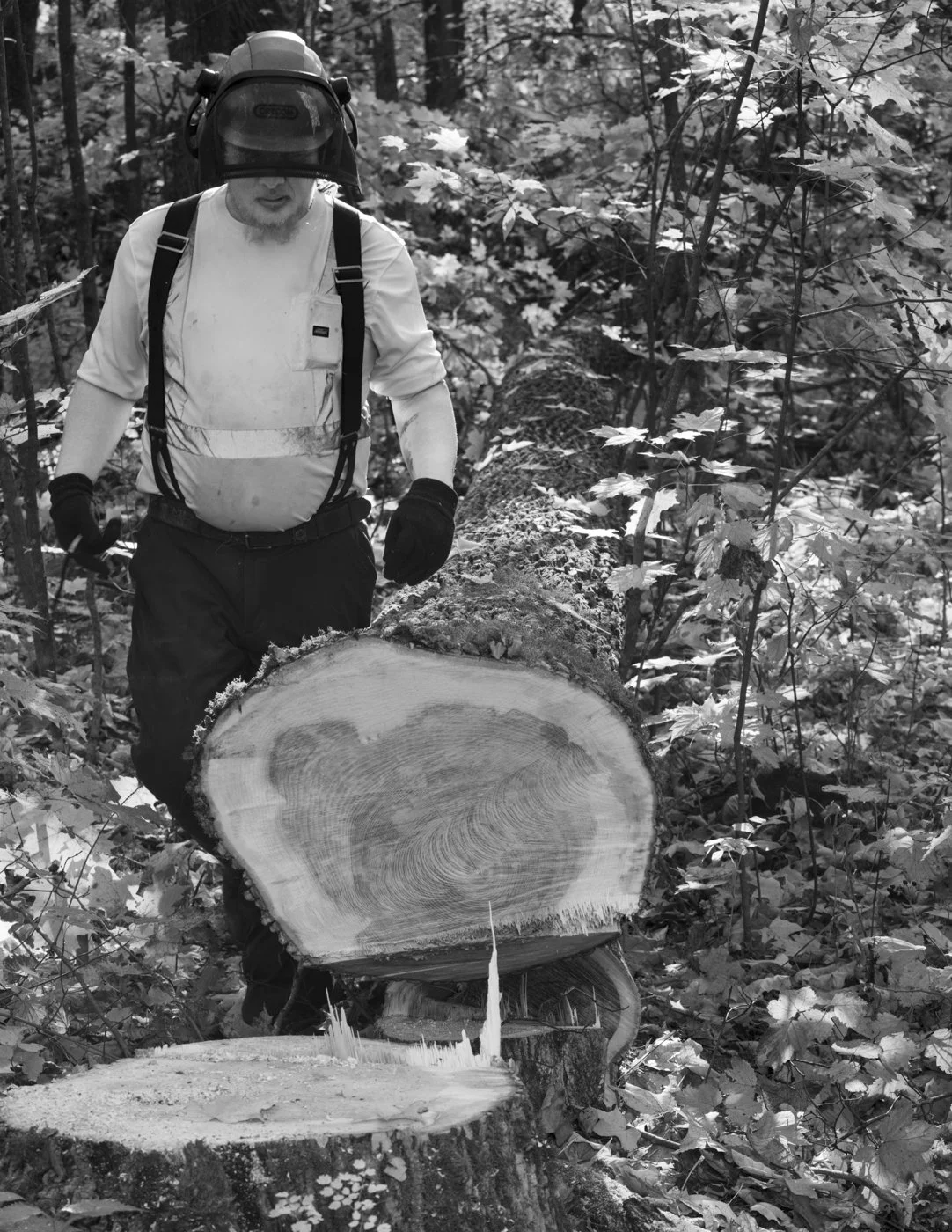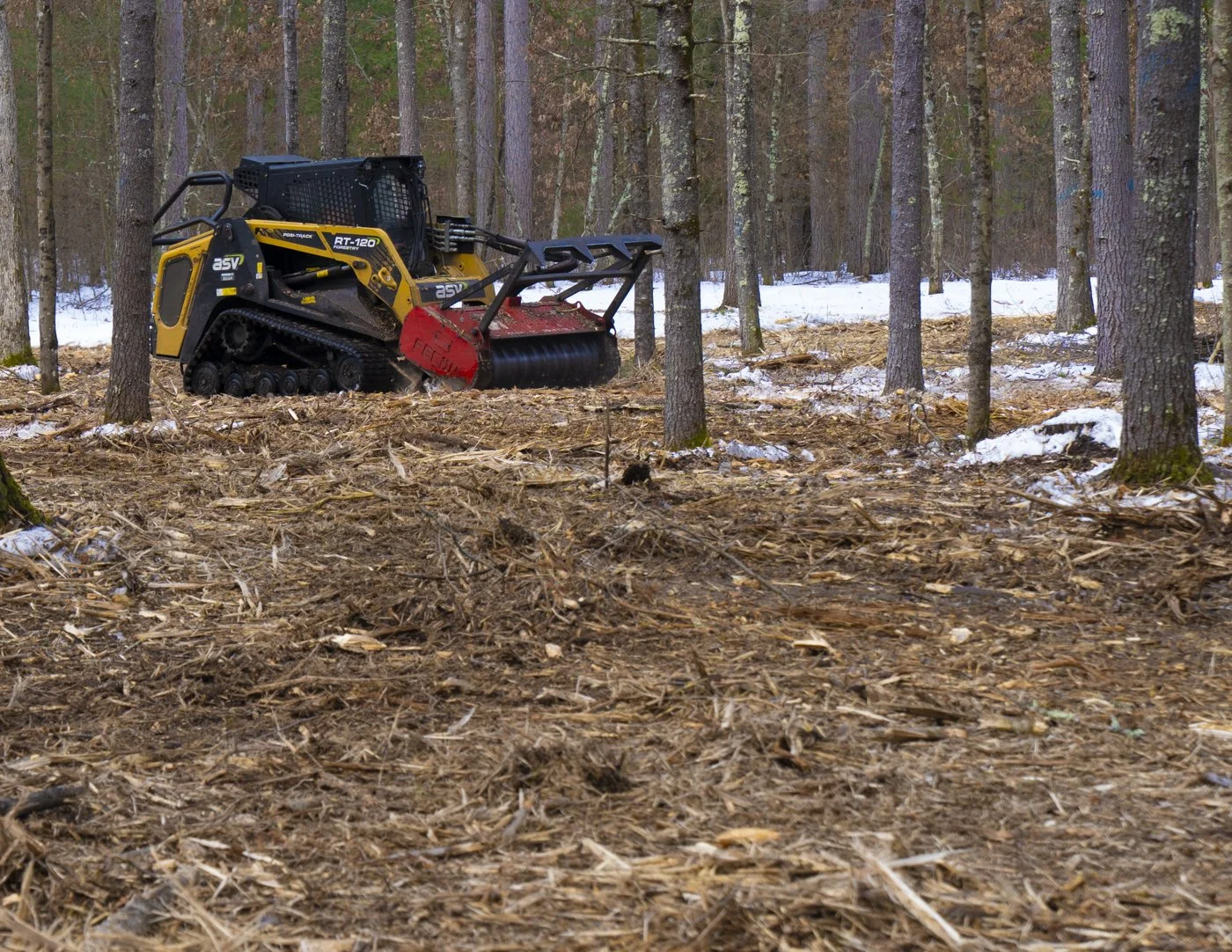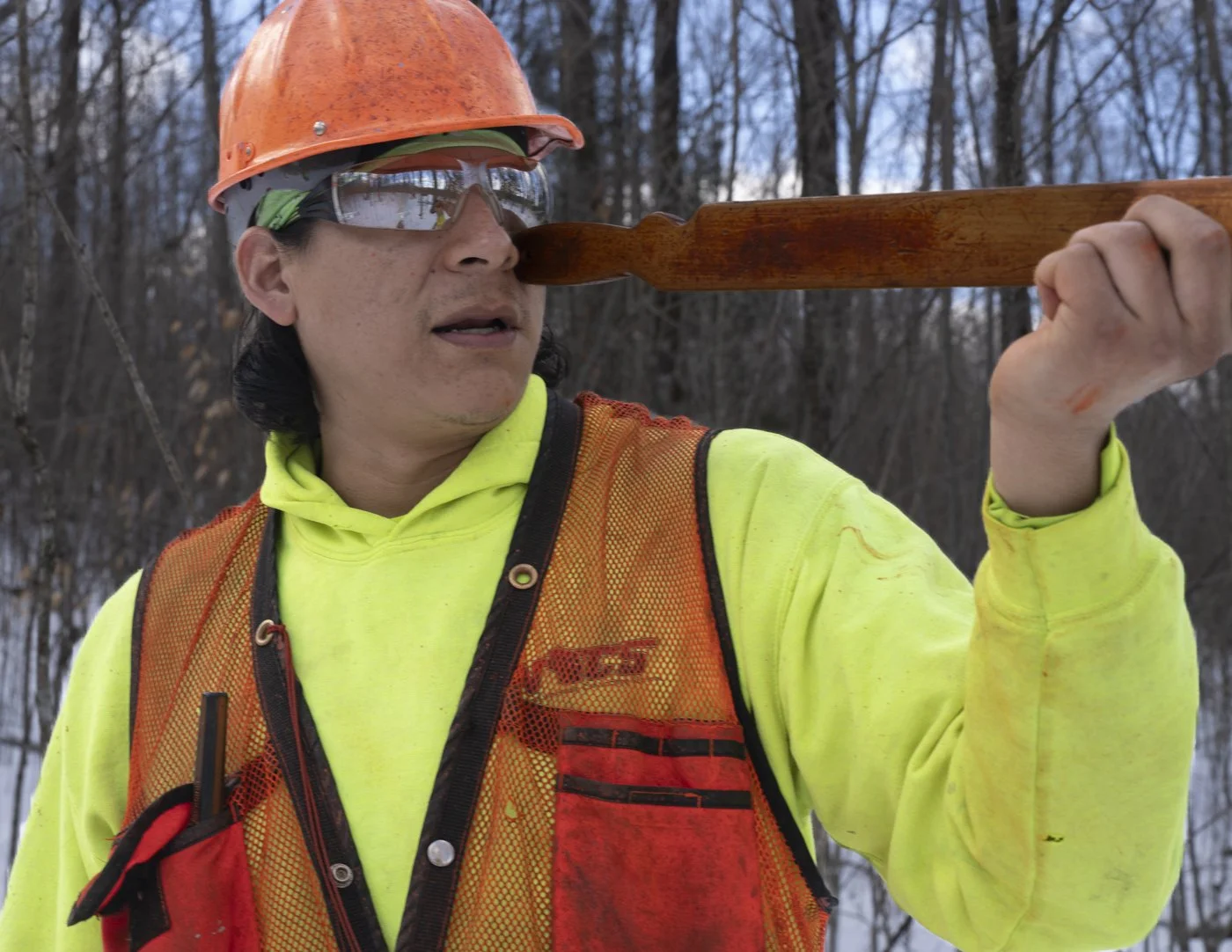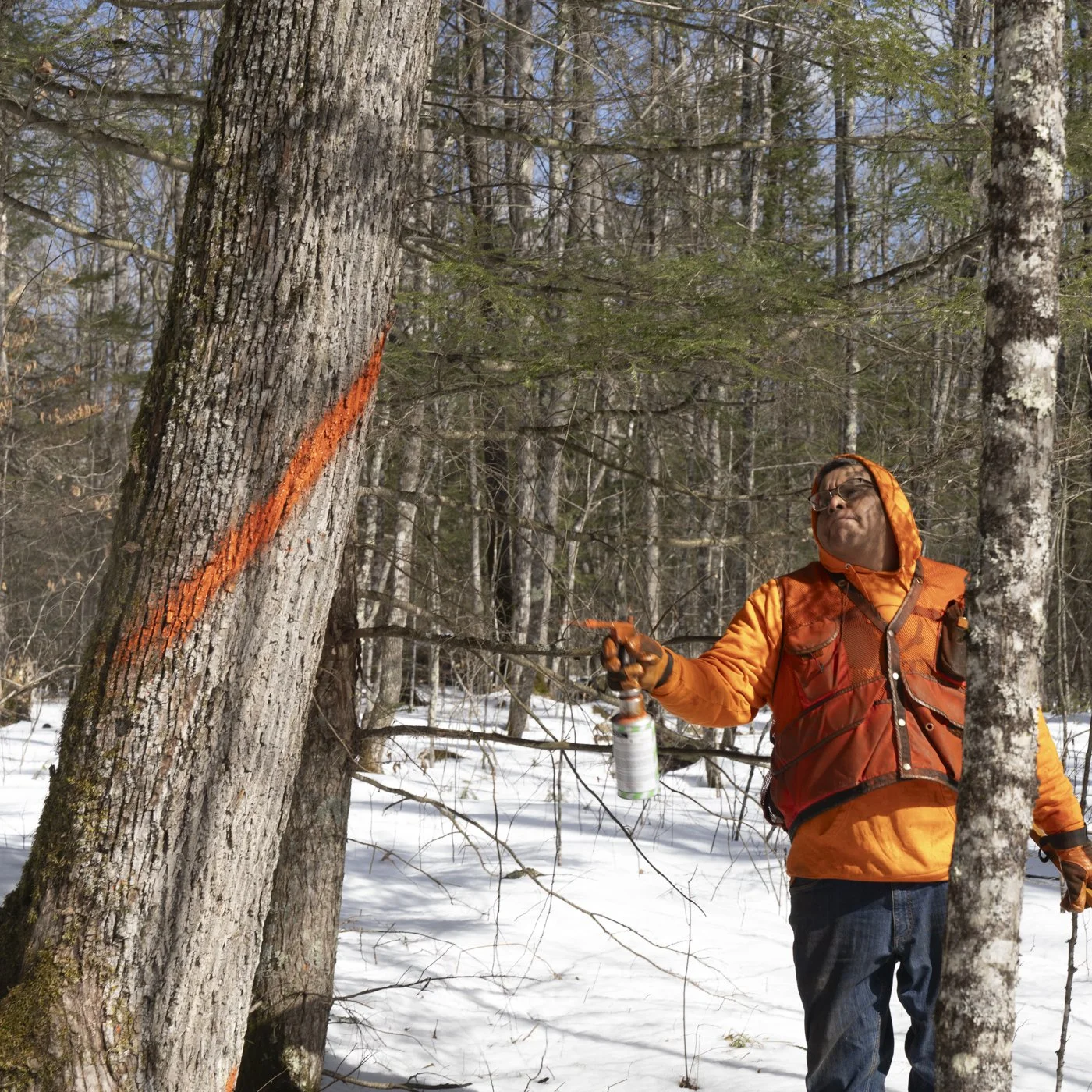




-
Against overwhelming odds, the Menominee Tribe of Wisconsin has preserved its native forest lands from government exploitation since the early 1800s. These documentary images tell the story of the people who manage the forest today, their practices, and their enduring stewardship of the land.
Spanning 235,000 acres, the Menominee forest has never been clear-cut. In the 19th century, the tribe successfully resisted government-backed logging that devastated many other forests. Instead, they followed the sustainable forestry principles laid out by Chief Oshkosh in 1854.
Today, their forest produces 10 to 15 million board feet of lumber annually, generating tens of millions of dollars in revenue while providing over 200 jobs for tribal members. It stands as the largest private employer on the reservation north of Green Bay, Wisconsin.
The Menominee approach to forestry is both intricate and labor-intensive. Only trees that are aged, canopy-blocking, or deformed are harvested. Skilled hand cutters—sawyers—meticulously remove these marked trees while ensuring the surrounding forest remains undisturbed. Sacred sites, including ancient burial mounds, are protected by archaeologists, and no trees are cut within half a mile of the Wolf River to prevent erosion.
Although their methods are more costly than clear-cutting, they have sustained and even expanded the forest—now larger than it was in 1854— through nearly two centuries of careful management.
The tribe’s expertise extends beyond forestry. Their deep knowledge of agronomy, viticulture, and controlled burning techniques has drawn admiration from the U.S. Forest Service, which frequently brings international foresters to study their methods. The Menominee’s forestry company, Menominee Tribal Enterprises, has played a key role in shaping Wisconsin’s forestry regulations, leaving a lasting legacy of sustainable land management.
Menominee wood is prized for its quality and is used worldwide in a variety of applications. Their lumber has been crafted into basketball courts—including many Final Four and college team floors—as well as high-end cabinets, windows, doors, moulding, and pallets.
Even handcrafted toys are made from Menominee wood.
In cooperation with the tribe and a grant from the Puffin Foundation, I have been documenting these practices for several years and will complete this project and publish it in book form in 2025.
-
Book with planned publication by Wisconsin Historical Society Press in 2027. Archival 17x22 prints for accompanying exhibitions. Images will be in the new Historical Society Museum as part of the Menominee permanent display.
Narrative by Frank Viasvilas, Indigenous People Columnist, USA TODAY
